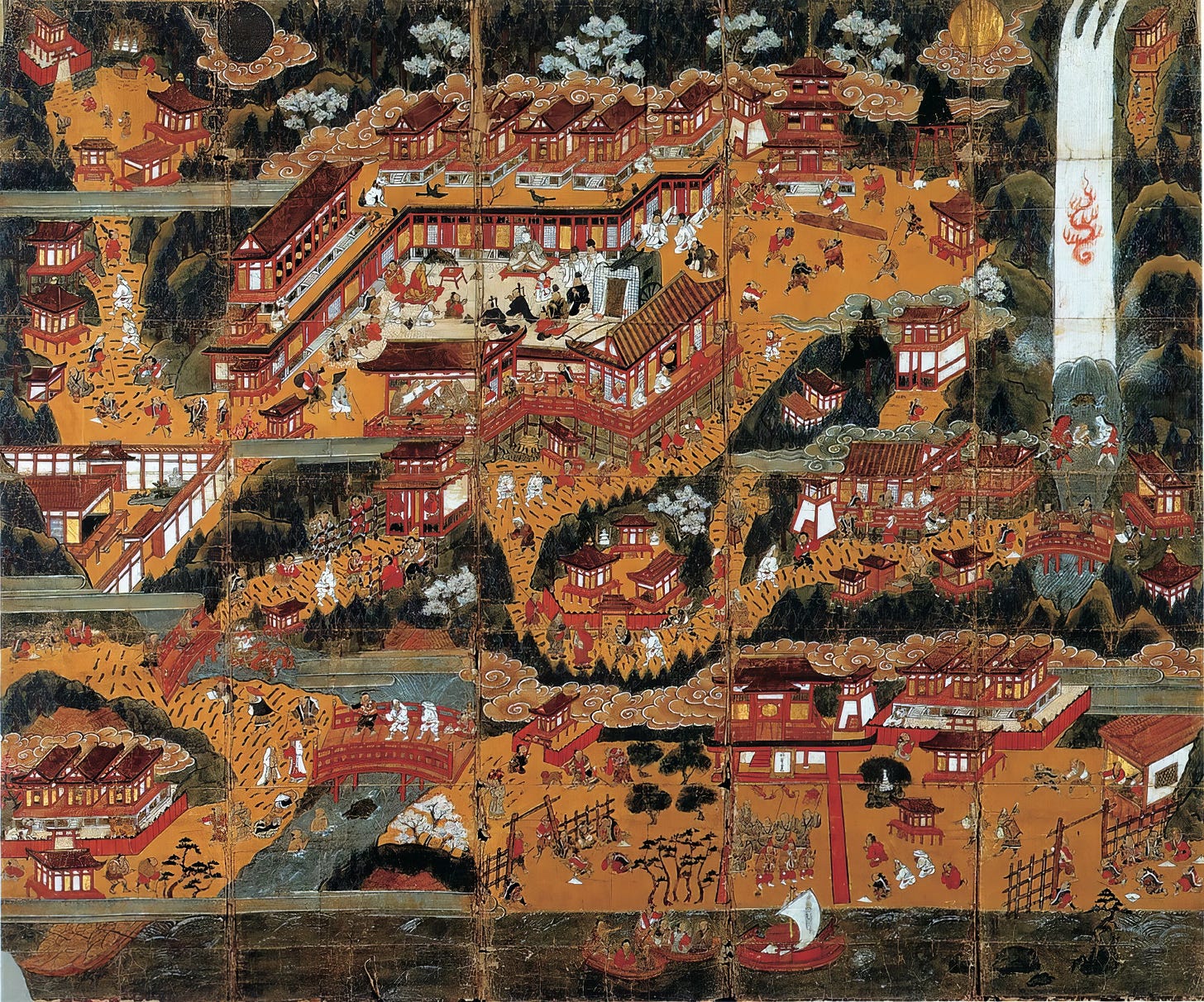En no Ozunu and the Foreign Origins of Shugendō
The Fusion of Indian Spirituality and Mountain Worship in Shugendō’s Origins
In this article, we explore the background of how En no Ozunu (役小角, also known as En no Gyoja 役行者)—regarded as one of the greatest mysteries in Japanese history and hailed as the founder of the Kumano Kodo pilgrimage routes—acquired wisdom from a distant land and established his own unique religious faith.
En no Ozunu (634–701) was a thinker active during the Asuka period (593–710), and numerous legends about him have been passed down through the centuries. His influence was so significant—and his feats so extraordinary—that some have even speculated he might have been an extraterrestrial being.
Those who have visited Japan might be familiar with the Kumano Kodo, a network of ancient pilgrimage routes. En no Ozunu was the first to pioneer the development of these paths. He is commonly known as the founder of Shugendō (修験道), a new religious tradition that fused mountain ascetic practices derived from Buddhism with elements of Shintō. Yet the reality behind this is far more complex.
His greatest achievement lies in his ability to fuse diverse spiritual beliefs—various religions, esoteric rituals, witchcraft, medical practices, and more—that existed in Japan at the time, forging his own distinct worldview in the process.
Because of this breadth of influences, it is nearly impossible to encapsulate En no Ozunu or Shugendō in a single sentence. Nonetheless, as a first step toward understanding, let us examine one of the most important sources that informed the Shugendō tradition he established—a source that originated in the faraway land of India.
Stretching from southern Nara Prefecture to Wakayama Prefecture is the majestic Kumano mountain range, with countless peaks receding into the distance. Among these sites, Nachi Falls—one of the most popular destinations for travelers and a key endpoint of the Kumano Kodo—has been venerated as a sacred place of nature worship ever since the Jōmon period (ca. 14,000–300 BCE).
We will explore this in more detail another time, but the ancient faith at Nachi has roots among the indigenous population living near Izumo Taisha in Shimane Prefecture. Initially, however, “mountain worship” did not exist in Japan. It was introduced by migrants from abroad.
After over ten thousand years of Jōmon-period nature worship, the arrival of a certain figure from India around the 4th century brought about a major transformation in Kumano’s faith. This figure was a mysterious monk referred to as the “Ragyō Shōnin (裸形上人).”
In Japanese, the name “Ragyō Shōnin” does not denote a single individual’s name; rather, it refers to a “Naked Sage.” This likely alludes to the robe-wearing ascetics of the Indian mountains. To the people of Kumano at the time, his attire and ethnicity must have been entirely unfamiliar.
Having landed in Kumano, the Ragyō Shōnin looked upon the grand mountain range and was reminded of his homeland of India. He saw Nachi as an ideal location and began to blend Indian mountain-worship practices with the existing nature worship that had been part of Japan’s spiritual landscape since the Jōmon era, establishing a unique religious view in the process.
It was around this time that the knowledge of the Dravidian peoples—who originally built the Indus Valley civilization and later fled to southern India and Sri Lanka following the Aryan invasions—was also transmitted to Japan. Among the most notable of these teachings was Ayurvedic medicine.
The Ragyō Shōnin brought with him the ascetic traditions from India’s rugged mountain regions, as well as Ayurvedic medical knowledge, which he used to treat illnesses. He also introduced the concept of waterfall purification and practice.
Over time, he gained the trust of local residents and eventually built Seiganto-ji Temple near Nachi Falls. The scenic temple, now visited by numerous tourists, was in fact the first temple in the region to be established by an Indian monk rather than by the Japanese.
During that era, political power was centered in southern Nara Prefecture, extending toward what is now Osaka. Essentially, these were low-lying basin areas. Consequently, Kumano—separated from the political core by the rugged mountains—was free to develop its religious practices without government interference.
This Dravidian-derived wisdom that took root in Kumano merged with Japan’s Jōmon-era nature worship. It was then further enriched by elements of Chinese Taoism, Confucianism, Buddhism, and other medical traditions, thus cultivating a completely new spiritual perspective.
The person who inherited, systematized, and developed this unprecedented religious worldview was none other than En no Ozunu, and it is from this synthesis that Shugendō emerged. It was never merely a practice of mountain asceticism.
En no Ozunu himself was born into an ancient Shintō family in southern Nara. At that time, Buddhism was also taking hold in the region, so he naturally gravitated toward it from an early age. Traveling through various mountain areas to deepen both his practice and scholarship, he founded a new faith that simultaneously honored the kami.
Given that descendants of the Indian migrants introduced by the Ragyō Shōnin likely still resided in the Kumano area, it is hardly surprising that En no Ozunu would have interacted with them and inherited some of their profound knowledge.
Thus, one of the sources that gave rise to En no Ozunu—hailed by some as the greatest superhuman or even an extraterrestrial in Japanese history—was intriguingly the wisdom of Dravidian people from distant India.



